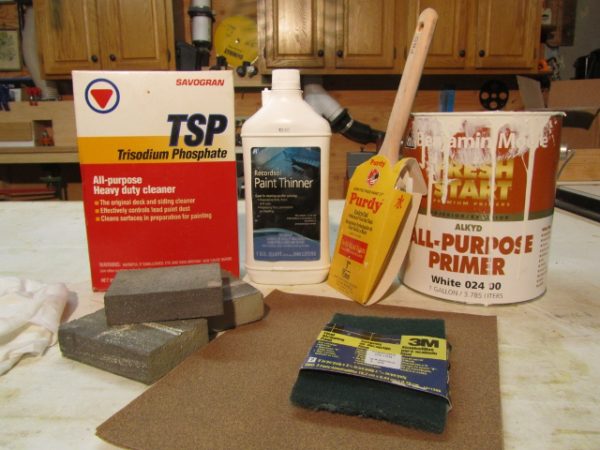How To Paint Over Polyurethane
Painting Over Polyurethane Or Varnish Finishes
This article will explain how to paint over polyurethane or varnish finishes. Painting over polyurethane woodwork can be time consuming, and maddening. Improper techniques can lead to your paint finish to fail; bubble, peel or chip.
Read my detailed step-by-step instructions below on how to eliminate the steps of having to strip or sand down to bare wood, and still have quality end result.
Safety Information
It is very likely that you will be using a chemical to etch the polyurethane. When painting over polyurethane is important to provide excellent ventilation [set up a fan] and ALWAYS wear a respirator.
1. Always read the labels, as many oil paints, stains, lacquers and varnishes are extremely toxic.
2. Keep out of reach of children.
3. For your own safety, always work in ventilated areas. Allow fresh air to circulate.
4. Wear protective gear, including gloves, eye-wear and respirators. Always use appropriate protective gear on all exposed body areas, especially the hands and eyes.
5. Leave the working environment regularly to access fresh air.
6. Many products are highly flammable and combustible, so NEVER WORK NEAR HEAT SOURCES and DO NOT SMOKE while working with these products.
7. All solvents should be properly disposed of at your local facility.
8. Vapors are harmful. They may affect the brain or nervous system causing dizziness, headache or nausea. Reports have associated repeated and prolonged occupational overexposure to solvents with permanent brain and nervous system damage. Always follow manufacturers suggested use found on all labels.
9. Rag disposal: Soak soiled rags and waste immediately after use in a water-filled closed metal container.
10. Oil / Alkyd based products: Paints, primers, varnish and stains. These products contain petroleum solvents.

Keep away from heat and flame. Avoid breathing vapors or spray mist by opening doors and windows or use other means to ensure fresh air entry during application and drying. If you experience headaches, eye watering or dizziness, increase fresh air or wear a respirator (NIOSH/Msha TC 23C or equivalent) or leave the area. Avoid contact with skin. Do not smoke or use near open flame.
Inexpensive respirators cost approximately $26.00 at your hardware store. I recommend a NIOSH/MSHA TC-23C-1614 approved respirator.
This respirator will protect you from organic vapors, paint fumes, pesticides, dusts and mists.
Continue reading. . .











